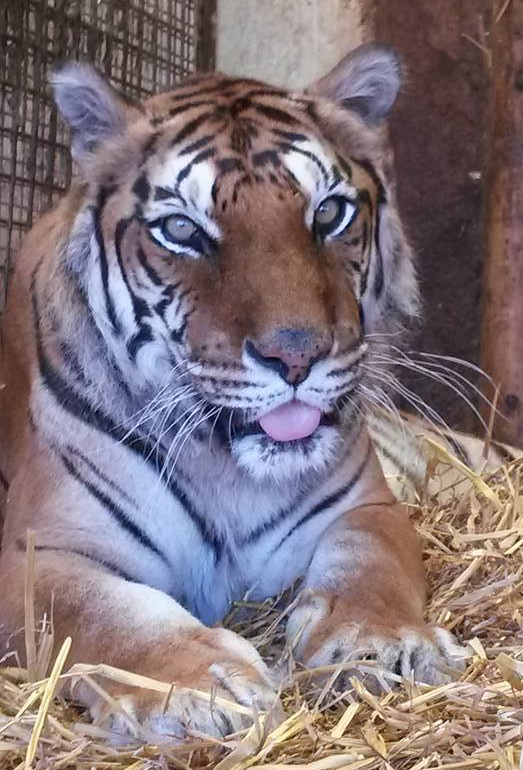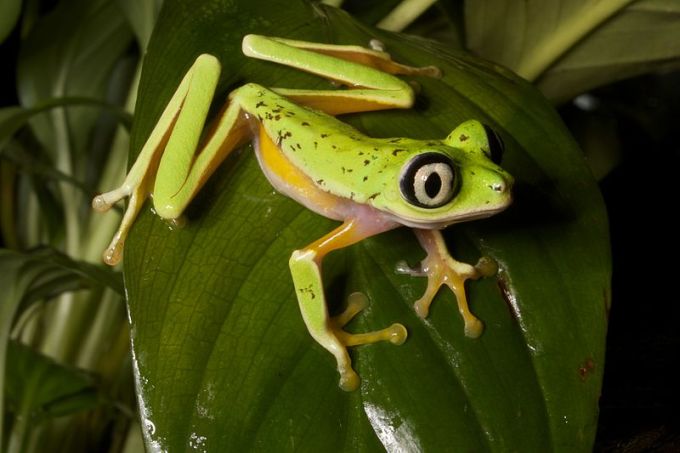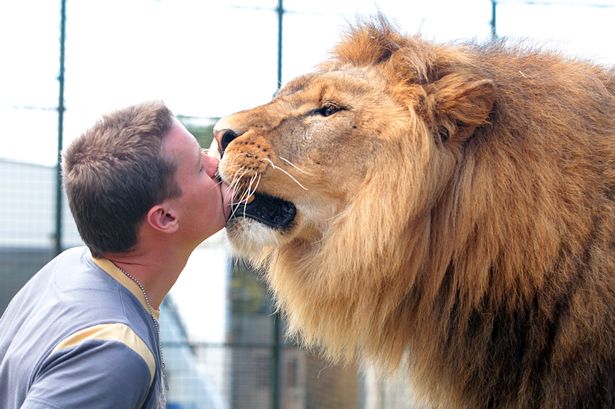
Circuses, zoos, safari parks and aquariums are all responsible for confining wild creatures and putting them on display for human benefit. But it is difficult to know how the animals feel about it…
by Megan Packer
Something changed the day that Nadia, the Sumatran tigress was found dead in her enclosure. The usual upbeat spirit of the circus had deflated, as the realisation that it would never be the same began to sink in. All of the staff were in tears. They had lost more than just an animal; Nadia was a member of their family. In the wild, Sumatran tigers are an endangered species and there is now one less in the world.
After her retirement from the show two years ago, she spent her days lounging by her pool and eating all the meat she could manage. Removing her from the show had to be a slow process as it was where she received the majority of her physical stimulation. Introducing Nadia back into the wild at 19 would have caused her too much distress and danger, so the Circus Director, Anthony Beckwith vowed to watch over her while she enjoyed a well-deserved rest. Nadia was old and unfortunately she passed away in her sleep due to heart failure. An Evening with Lions and Tigers continue to perform in her honour. “Nadia’s legacy will always live on with the show,” says Beckwith.

The question of animals and their rights in the entertainment industry is one that lacks a definitive answer. It is a matter of moral opinion whether you agree or disagree with organisations that display and perform with animals that belong in the wild. Animal welfare on the other hand, is a different debate. It may not be illegal to train lions and tigers to jump through hoops and rings of fire, but it is unlawful to confine them to uncomfortable, cramped conditions.
There are two circuses that travel the UK with a number of lions and tigers, as well as 83 zoological gardens that home tropical animals. All establishments are required to adhere to legal regulations that protect the welfare of their animals. In the wild, a creature’s stimulation often comes from hunting, mating and roaming which is not naturally possible when kept in captivity. Therefore, zoos and circuses have the challenge of emulating an environment that each animal can feel as much at home in as their natural habitat.
Sonul Badiani-Hamment, Campaigns Assistant at People for the Ethical Treatment of Animals (PETA), believes that it is not possible to give a wild animal what they need in captivity. She says that zoos and circuses are an inadequate environment with no natural stimulation. “Animals do not jump through rings of fire for fun, they do it out of fear.”
The welfare of animals in the entertainment industry is governed by three pieces of legislation:
- The Zoo Licensing Act 1981
- The Animal Welfare Act 2006
- The Welfare of Wild Animals in Travelling Circuses Regulations 2012
If any zoo or circus is found to not follow the recommended guidelines that are in place, they will undergo immediate investigation. Dependent on the result, the establishment could face closure. In this case, their animals would be re-homed in zoos or circuses across the country.
Circuses and zoos are also known for their breeding and conservation work for wild and sometimes endangered species. Keeping an animal in a captive environment undoubtedly protects them from the harm of being hunted, or savaged to death by wild predators. The impact of climate change affects species in their natural habitat. From polar bears who struggle to hunt for food in the summer, to black rhinos who faced extinction because of drought in Kenya. If a zoo or circus is able to provide an environment similar to their natural home to keep the animal in existence, it is offering a positive contribution towards nature and the welfare of the animals in their care.
Paignton Zoo in Devon are an active conservation and education charity. The staff are passionate about the safety and health of their animals and aim to make sure that they are content and settled in their enclosures. “I think that zoos have never been more important than they are today. We need to inspire the next generation of conservationists,” says Phillip Knowling, Press Officer at Paignton Zoo. Recently, the zoo has been praised for their breeding of a rare lemur leaf frog that is considered endangered. The team were able to create an enclosure with regular rainfall and humidity so that the frogs would mate, just as they do in their natural habitat.

“To keep a species alive you have to provide them with all things that they need. This can range from giving them the correct diet, to replicating the specific nature of their habitat in their enclosure. You have to make them feel comfortable,” he continues.
An Evening with Lions and Tigers is one of the two remaining circuses in the UK. Beckwith dedicates himself to maintaining the welfare of his two male African Lions Tsavo and Assegai and two male Bengal Tigers Syas and Altai. Nadia, the Sumatran tigress who died recently spent a large part of her life with the circus and lived to reach 21. In the wild, Sumatran tigers have a life expectancy of between 10 to 12 years. Being kept in captivity meant that Nadia was able to live double her expected life span. The enclosures that these animals live in have been designed to provide them with physical and mental stimulation, such as balls, logs, food and scratching poles.
In the wild, Sumatran tigers are at great risk of becoming extinct because of the effects of the palm oil industry. It causes mass deforestation and endangers the lives of wild animals by destroying their natural habitats. The death of Nadia has encouraged An Evening with Lions and Tigers to start a campaign, in her name, with the hope that people will stop using products that contain palm oil. “Small lifestyle changes like drinking Coca Cola instead of Pepsi can help to save these endangered animals,” urges Beckwith. The circus will offer educational talks in their shows to inform the public on the issue and spread awareness.
“A wild animal trainer offers their devotion and love to each of their animals.”
There is a stigma attached to circuses; it is assumed that the animals are subject to harsh conditions and punishment for training purposes. Animal rights supporters believe that trainers cannot possibly care for their animals if they keep them locked away in cages. An Evening with Lions and Tigers offers their audience the opportunity to watch behind-the-scenes demonstrations of their training methods, which only consist of positive reinforcement. “Every trainer in our show could talk to you for hours about their animals’ individual personalities, likes and dislikes and which methods of training each of them respond to and enjoy,” says Beckwith.
Beckwith grew up with the desire to work with wild animals. His career prospects fluctuated between zoo keeping, or on the conservation parks out in the African Savannah. This was until he visited a circus. He witnessed the irreplaceable bond between the animals on display and their trainers. He knew that he would never be able to find that close connection anywhere else. “For me, as much as I love the business side, my passion lies with the training of the animals.” He has spent the last 16 years in the industry, working closely with a variety of domesticated and exotic animals.
“The connection that you make with your animals can not be found anywhere else in the industry. The animals are so much more than just an act, they are our lives, they are our family,” he says.
Those who work in circuses claim they make it possible for humanity and animals to form a unique relationship. The creatures are so reliant on them and they communicate on a daily basis. Throughout each performance, one of the male lions Tsavo enjoys getting up close and personal with his trainer by showering him with kisses and hugs. Assegai prefers to run along platforms and jump through hoops, while the crowd erupts in cheers and applause. A wild animal trainer offers their devotion and love to each of their animals. They say it is their ethical and legal obligation to ensure they are free from hunger, thirst, discomfort, pain and distress and that they allow them to express normal behaviours.

According to Animal Behaviour Specialist, David Montgomery, animal entertainment establishments can have both a positive and negative impact on an animal’s welfare and behaviour. However, it is dependent on the species and the circumstances to which they are exposed. “Factors such as size of enclosure, replication of wild environments, restrictions imposed on expressing natural behaviours and contact with humans will all have an effect,” explains Montgomery.
Breeding and release programmes aimed at conserving a species that would otherwise become extinct is a positive aspect. However, there is a potential for abuse within zoos and circuses which will result in a negative impact. Montgomery says that it is only in recent years that an animal’s psychological welfare has come into question. Poor captive management such as little or no exercise, cramped enclosures and lack of food can cause a series of behaviour conditions such as head bobbing, swaying, rocking and pacing. This is commonly referred to as ‘zoochosis’.
Experiments have provided evidence that being kept in a captive environment for the entirety of its days has a negative influence on an animal’s quality of life. A government-funded study of elephants in UK zoos showed that over half of them were exhibiting behavioural problems in their enclosures, similar to that of zoochosis. Nicola O’Brien, Campaign Director at Captive Animals Protection Society (CAPS), explains that lions in UK zoos have also shown recognised signs of distress, as they spend half of their time pacing. “While some zoos claim that the work they carry out is for conservation and breeding, we believe that animals in captivity always have to compromise,” she says, “Animals in the wild are affected by climate change and hunting – both of which have been influenced or carried out by humans. Captivity is not the solution to those problems.”
Video: Epitalto
Evidence has shown that in some cases animals do have longevity in captivity. According to O’Brien, polar bears in the wild live to be an average age of 15 but in captive environments have proven to reach 30. However, polar bears are subject to struggles in captivity. Studies have shown that they do not breed well in zoos and their off-spring often die within the first year of birth. Any animal’s quality of life will never be entirely the same in captivity as it would be in the wild. The conditions are restricted, and the habitat is not the same. “It would be inhumane to treat humans this way and it is inhumane to treat animals this way too,” protests Badiani-Hamment.
Animal welfare campaigners should not dismiss the fact that in captivity, animals are better protected from poachers and other wild species. Just as entertainment establishments that display animals should always endeavour to eliminate the factors that have a negative impact on the welfare of the animals in their care. Life in captivity is different from life in the wild, but both have the potential to protect and cause harm.
As much as zoos and circuses try, their enclosures will never completely replicate the wild. However, that is not to say that the animal’s welfare is not important to zoo keepers and trainers. Unfortunately, animals in captivity and the wild are unable to voice how they feel about their standard of life. It is up to us, humanity, to make decisions that will give wild animals of all shapes and sizes the best chance at life.
You must be logged in to post a comment.